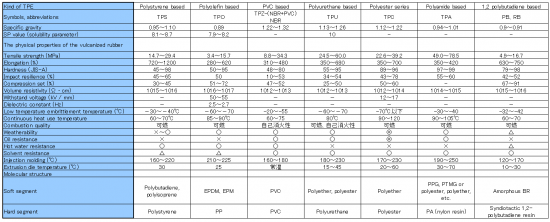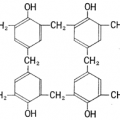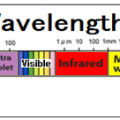INDEX

Elastomer
The elastomer is the generic name of industrial materials having rubber elasticity.
It was first used from 1960 early in the shortened form of the elastic polymer (polymer resilient).
In general, a synthetic rubber from natural rubber or old, and used to “rubber” to indicate the so-called “guess rubber” rubber, “elastomer”, as the recent thermoplastic elastomer, the boundary material of the plastic it is used in new materials, including up.
1. Natural rubber
Rubber sap (Latex) → purification dried product (raw rubber) → sulfur was added elastic strengthened (vulcanized rubber) → rigidity enhanced by the addition of carbon powder (hard rubber)
Natural rubber is also be referred to as NR.
2. Thermoset elastomer
In a certain range, the heat without having to soften it can be added to a relatively high heat resistance elastomer.
In general, it is called “rubber”.
There are many things that are marked as “○○ rubber” (for example, nitrile rubber ) in the product name.Most of the early synthetic rubber will be included in this category.
There are some of urethane rubber, silicone rubber, fluorine rubber, and so on.
3. Thermoplastic elastomer
Thermoplastic elastomers (TPE), which at room temperature indicates the characteristics of the vulcanized rubber (ie elastomers), making it possible to plastically deform when it comes to high temperature, which is defined as a polymeric material that can be molded by a machine for plastic .
There is a standard in ISO18064: 2003.
Was softened by the application of heat and shows the liquidity, because if cooling has the property back to the rubber-like, it is called a thermoplastic elastomer.
TPE has many features compared to vulcanized rubber, also it has an intermediate performance of rubber and plastic.
TPE does not require a vulcanized to have the performance of the vulcanized rubber.
The reason for this is because it is made from TPE always resin component (curing block) and rubber component (soft block).
In the TPE consists of two components, has a function to prevent the plastic deformation as hard block some form in the cross-linking points in the vicinity of room temperature ( vulcanized point).
As a result, TPE shows the performance of the elastic body (= vulcanized rubber).
However, raising the temperature, the resin component of the hard block is no longer able to work cross-linking point is melted, enables molded plastic deformation.
There is a possible advantage quickly molding process by injection molding, but it is not suitable for applications requiring heat resistance to deformation by heat.
There are styrene-based, olefin-based, vinyl chloride-based, urethane-based, amide-based, and so on .
The history of the elastomer

Christopher Columbus (Aug 25, around October – May 20, 1506) lore: Genoa-born Italy
Origin of “gum”.
Today’s such as the gum in Spanish and English, gomme in French, gummi in German, substances that are represented by a group of European languages.
Its etymology, ancient Egyptian “kema · kemai” →Greece “commi”→Rome “cummi · gummi” .
In ancient times and medieval, insoluble in alcohol and water are markedly swollen by the inclusion of by it becomes gelled and was not meant more substances of plant origin which is a colloidal solution of sticky addition of water depending on the type .
On the contrary, amorphous substance of the plant-derived melts at insoluble in alcohol to water had been called resina in Spanish ,resin in English , résine in French , and harz in German.
The discovery of rubber trees
Since ancient times, in South America has native trees of rubber, it may flow naturally sap to or hurt this tree.
The sap is I will be in the wild rubber hardens under the tree.
South America of people this from the past, seems to have been used or as a simple vessel, such as a water bottle or use as a ball in play.
Columbus landed in Puerto Rico and Jamaica in the second round of the voyage of 1493, (there is also a theory that Haiti.) In it is said to have very surprised seen to children are playing in the big bouncing ball made from sap .
Since the European people was similar to rubber knew for a long time, material of South America was also called rubber.
Then I’ve been brought back to Spain, the subsequent 200 years, it has been used as a toy.
Etymology of the English word “rubber”.

Joseph Priestley (FRS March 13 1733 (lunar calendar) – February 6, 1804), the 18th century British scientist, natural philosopher, educator, theologian, the priesthood of the nonconformist person, political philosopher, he has published more than 150 works.
Ammonia, hydrogen chloride, nitrogen monoxide, nitrogen dioxide, the discovery of sulfur dioxide known
The pencil was invented is the England of 1550 around.
1770, Priestley was discovered the property that can be put out the character of the pencil you write on paper to rubber.
This is the beginning of the eraser. And this has been referred to as now commercially available “rub out “.
The English word “rubber”, which means the rubber it was born is derived from here.
People at the time of the literacy rate that can record words using the letters and writing utensils in about 5% was very few.
Rubberized waterproof cloth
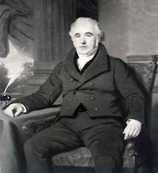
Charles Macintosh ( FRS Nov 29, 1766 – July 25, 1843) Scottish chemist
The latter half of the 1820s, the success of the rubber-coated fabrics by Macintosh (Macintosh cross), the rubber industry has developed around the United Kingdom.
At the time, it is the era of horse-drawn carriages had Ikika~tsu in the city of rainy London.
To prevent the rain, there is only about mantle impregnated with oil cloth, people had struggled to beat the wind and rain.
So in 1823, Mackintosh of Glasgow, UK, the coated natural rubber dissolved in between two sheets of dough, it has invented a waterproof cloth plus a crimped heat.
And, this innovative rubber-coated fabrics coat that was manufactured in the fabric gives a shock in the UK, it was spread in an instant as a riding coat and raincoats.
Rubberized fabrics Court at the time, was the innovative things in the most creative that has transformed the lives of everyone.
In the UK even now, called the Macintosh the generic name of the raincoat, the great inventor’s name has been engraved in history.
The discovery of the vulcanizing method of rubber
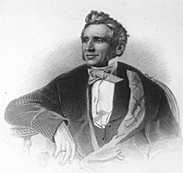
Charles Goodyear (Dec 29, 1800 – July 1, 1860) Inventor of USA.
Rubber of this at the time, in the sticky in the summer heat, winter is a condition such as tick in the cold, there was a problem that susceptible to the influence of temperature.
Study of a wide has been made by the people in order to improve the problems of this raincoat.
1839, Goodyear has found a cross-linking of natural rubber by sulfur.
Laboratory in spilled chemicals that have been used during the experiment in his rubber shoes that fell asleep, which is heated by the stove, he was discovered and noticed that the elasticity of the rubber shoes are increasing that woke up the next morning.
This discovery, like there are several theories, in the hotel was staying, a piece of rubber mixed with sulfur was placed casually on top of the stove, if you look after a while, it has become sticky due to heat has made of rubber to leather-like, it seems also remains episode that thing was noticed discovered to have an elastic force.
In any case, by chance, a vulcanized rubber having a hard becomes elastic by sulfur was discovered.
This great achievement has been left as the name of the world’s largest tire manufacturer, “Goodyear” in the United States today.
Demand such as rubber footwear and waterproof clothing and cushioning material, anti-vibration absorber was gradually increasing.
In addition to this, it was found to have properties such as electrical insulating properties and durability, the value of the industrial materials rose.
The development of the rubber industry
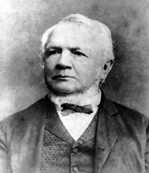
Thomas Hancock (May 8, 1786 – March 26, 1865) British chemist
1843, Hancock was discovered that the rubber vulcanization have come from chemical bonding of rubber and sulfur, he had developed variety of vulcanizing method pioneered the processing and machine rubber.
And after the vulcanization in honor of the god of ancient Rome fire VULCAN was named “Vulcanisation”.
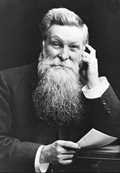
John Boyd Dunlop ( Feb 5, 1840 – October 23, 1921) inventor of Ireland (Scotland-born).
In 1888, the Irishman veterinarian Dunlop asked from Johnny of his son to make sure that ” How I can run early more easily”, “Practice.” was only answered at that time.
However, when Johnny broke a bicycle tire, a hint came to his mind.
It was that the structure of the tire is similar to the stomach of an animal.
Therefore, it mobilizes the knowledge as a veterinarian, to make a pneumatic canvasa tire that was painted rubber and the rubber tube, and fixed with studs around the disk of wood.
This was the invention of the pneumatic tire according to the first world.
He was patented in 1888, next in 1889 in “The Pneumatic Tyre and Booth’s Cycle Agency, Ltd.” was established.
Later, rubber tires also went been developed along with the invention of the gasoline car.
Become a supply shortage along with the expansion of the utility value, the price was large inflated. At the time, the rubber, had been taken only in South America the Amazon basin.
Therefore, the United Kingdom, consider the transplantation of rubber. We made the rubber plantations in Southeast Asia that had a colony. In this way, the rubber plantations went been established.
History of synthetic rubber
The beginning of the history of synthetic rubber is from the chemical study of the composition elucidation of natural rubber.
Do not have a base of natural rubber production in Southeast Asia, the United States and Germany that was struggling to obtain raw rubber is now at the center.
The development of the industry (such as the automotive industry) and demand of natural rubber due to war continue to increase at once, chemical research of synthetic rubber in which we will proceed.
In fact the practical employed synthetic rubber has been produced, at the time of the First World War, the world’s first synthetic rubber, trying to industrial synthesis of the German alternatives that do not have a place of natural rubber production it was a result of the attempt.

Charles Hanson Greville Williams( Sept 22, 1829 – June 15, 1910) British chemist
1860, isolated from natural rubber of isoprene by CHG Williams, was a milestone for synthetic rubber.
Chemists and the chain molecules of the resilient material is found that is composed of innumerable isoprene molecules fiber and by 1905, the person who knows how to cross-link the molecular fibers that time no one had It did not.
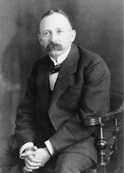
Friedrich Hofmann ( Nov 2, 1866 – Oct 29, 1956) German chemist
Friedrich Hoffman tried to cross-linking of the rubber. For the production of “natural rubber module” isoprene it was difficult, the chemical structure is very similar, it was resolved immediately using methyl isoprene which can be easily manufactured.
Hoffman will put this material in tin container made, I waited by heating. Sometimes I waited a few months.
Depending on the application temperature, the material produced in the tin-made vessel or become soft, was made or hardened always had elasticity.
As a result, Hoffman has invented the Mechirugomu (methyl isoprene). Thus, in the September 12, 1909, patent of the first synthetic rubber has been obtained in the world.
Hoffman, was studied in the laboratory of “Elberfelder Farbenfabriken vorm. Friedr. Bayer & Co.”, the tradition of the company is also taken over today by the specialty chemicals group LANXESS.
Continental Corporation was already a major rubber company from that time, began production from this new material for the first automobile tires in 1910.
Carl Duisberg was Hoffman boss, was traveling “Do not punk” 4,000 kilometers in the tire.
German Emperor also fitted with this tire in my car, I was very satisfied with the result.
Then, during World War II in the United States, it will begin industrial production of GR-S (current SBR).
This synthetic rubber, strong growth in wartime has become able to lay the foundation of synthetic rubber today.
In the early 20th century, research and development of synthetic rubber with properties that natural rubber does not have to continue to become popular, “general-purpose synthetic rubber”, and “special synthetic rubber” or “high-performance synthetic rubber” “elastomer” development and will continue to.
1934, Germany company to start manufacturing SBR and NBR.
1940, United States company developed the butyl rubber.
1944, Bayer by the company to start manufacturing urethane rubber.
1945, General Electric by the company to start manufacturing silicone rubber.
1954, DuPon Inc. and 3M by the company to start manufacturing fluorine rubber.
 HEAT-TECH Best Technology Online Shop
HEAT-TECH Best Technology Online Shop 

